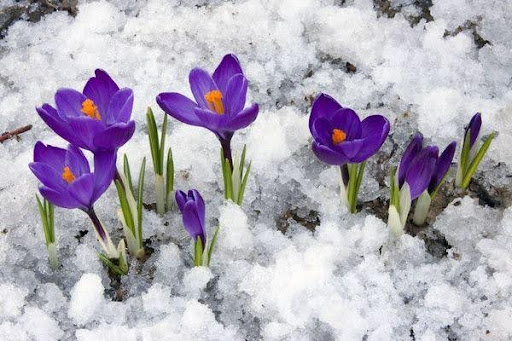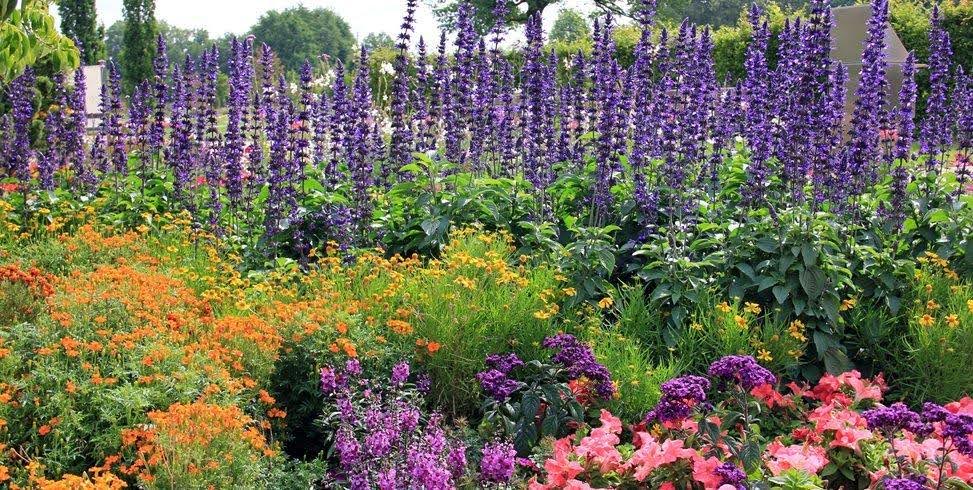Pollution, Pollination, and Punxsutaney Phil
Growing up, I never paid much attention to Punxsutawney Phil and his predictions of when winter would end and spring would begin. As much as I appreciated his legendary powers and otherworldly wisdom, I knew a secret he didn’t: winter was truly over when the tiny, resilient, electric-purple crocus first peeked out from the half-frozen soil — whether or not Phil saw his shadow. The crocus always marked the start of spring’s blooming season, soon followed by daffodils and, a few weeks later, tulips. I loved the feeling of being able to predict the future just by recognizing the flowers around me.

Electric-purple crocus peeking out from the half-frozen soil, a vibrant sign that spring is just around the corner
The Importance of Pollinators: Our Silent Partners
Naturally, I wasn’t the only one keeping an eye out for those first blooms. As spring temperatures rise, pollinators — who hibernate through the winter — begin foraging, and many rely on these early flowers for sustenance. In fact, 75-90% of flowering plants require pollinator visits to reproduce, as they spread pollen from one plant to another. This mutualistic relationship is essential not only for plant survival but for human survival too. In fact, one out of every three bites of food we eat is thanks to the work of pollinators.
Pollinators come in two types: generalists, who can feed on multiple plant species, and specialists, who rely on just one plant species. Each plays a crucial role in maintaining our ecosystems and food supply.

“One out of every three bites of food that we eat is thanks to a pollinator”
Pollinator and Plant Relationships: Nature’s Delicate Balance
Historically, flowering plants have evolved to bloom at different times of the year in a way that balances the needs of both general and specialized pollinators. This strategic timing reduces competition among plants for pollinator attention and ensures that each species gets its chance to attract its pollinators. This is why we see violets in early spring, daisies in summer, and chrysanthemums in late fall — each species is timing its bloom to ensure the best possible chance for reproduction.
Specialized pollinators, like those that rely on a specific host plant, also follow a predictable pattern: they forage during a particular season when their host plants are in bloom. This synchronized relationship is essential for the survival of both the plants and their pollinators. But unfortunately, climate change is disrupting this harmony.
Nature’s harmony is being disrupted by climate change.

The Allen’s hummingbird (Selasphorus sasin), like other hummingbirds, plays a crucial role in pollinating flowering plants
These complex plant to plant and plant to pollinator interactions have shifted and evolved over time but managed to stay harmonious. This harmony, however, is being threatened by climate change, and it’s impacting our earth’s biosphere in countless ways. The warming of our planet is changing bloom cycles, leading to lengthened flowering seasons, and early blooming for many plant species. While more blooming flowers may seem beneficial for us, these changes are detrimental to both plants and the pollinators who frequent them.

A Monarch butterfly gracefully perched on a flower, a symbol of nature’s delicate beauty and the vital role pollinators play in maintaining our ecosystems
Imagine if Starbucks released all of their seasonal drinks at once — suddenly, you’d have to choose between the Pumpkin Spice Latte, Peppermint Mocha, and the Strawberry Funnel Cake Frappuccino all at the same time. Currently, these drinks are released throughout the year, giving us plenty of time to enjoy each one in its own season. Similarly, plants have historically spread their blooms out over time, allowing pollinators like bees to visit a variety of species over the course of the year. But now, due to the shifting of bloom periods, we’re seeing a “front-loaded” spring with an overwhelming number of flowers at once, leaving pollinators scrambling to keep up.

Although beautiful, with its explosion of flowers, a front-loaded spring makes it challenging for pollinators to keep up with nature’s rapid burst of life
Competitive Pollination: A Growing Problem for Some Species
This change in bloom timing creates fierce competition for pollinators, particularly for generalist pollinators like honeybees, which can visit multiple species during a single foraging trip. The result? Pollen from one species is less likely to land on a plant of the same species, which means reduced cross-pollination and, consequently, lower plant reproduction rates. Additionally, this heightened competition can increase self-fertilization, where plants use their own pollen to reproduce, leading to lower genetic diversity and weaker plants.

Meet the buffish mining bee (Andrena nigroaenea)—a hardworking pollinator with a subtle metallic sheen
Specialized pollinators, like those that pollinate specific flowers, aren’t as affected by competition from generalist pollinators, but they are still facing challenges as bloom cycles shift. For instance, the early spider orchid relies on miner bees for cross-pollination, even going so far as to mimic a female miner bee using sex pheromones. Unfortunately, as temperatures rise, orchids and their pollinators have become increasingly out of sync.

The Spider Orchid relies on miner bees for cross pollination
The Impact of Warming: What’s at Stake
Records from 1848 show how orchids and bees have become progressively out of sync; for every 1℃ increase, the orchid blooms six days earlier while male bees emerge nine days earlier and females emerge 15 days early. Due to the mismatch, orchids are now likely to be out-competed by the actual female miner bees (Carrington 2014). This specific example is especially clear due historic records, however, many specialist pollinator relationships are thought to already be or at risk of going through the same scenario.
The earth has warmed approximately 2 ℃ since 1880, with a current yearly rate of about 0.32℃ (Lindsey and Dahlman, 2021). While the impact of this temperature increase on pollination and botanical blooms has not been studied or understood on a wide-scale basis, scientists are hard at work researching and tracking these changes in hopes of providing viable mitigations.
Why It Matters: Protecting Pollinators and Plants.
A longer blooming season might seem like a beautiful gift, but it brings with it a host of complications. While we can enjoy the beauty of an extended spring, it’s crucial that we also support efforts to reduce greenhouse gas emissions and contribute to scientific and botanical research aimed at protecting our pollinators.
This spring, I’ll be watching for those ever-resilient crocuses — not only as a sign of winter’s end but also as a reminder of the changes happening in our natural world. It’s a call to action to protect the pollinators who are essential to our food systems and to conserve the ecosystems that sustain us.
– Written by Katelyn Hammel, SummitWest Biologist

